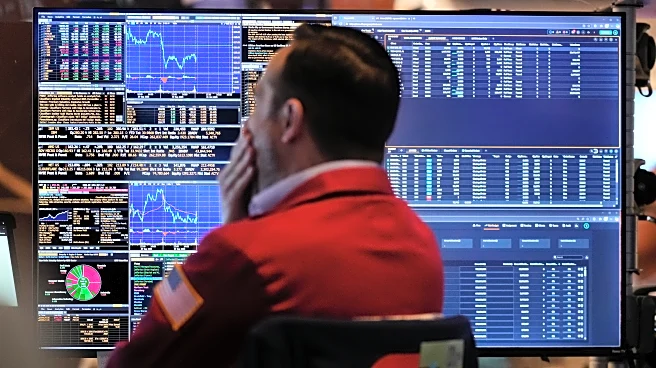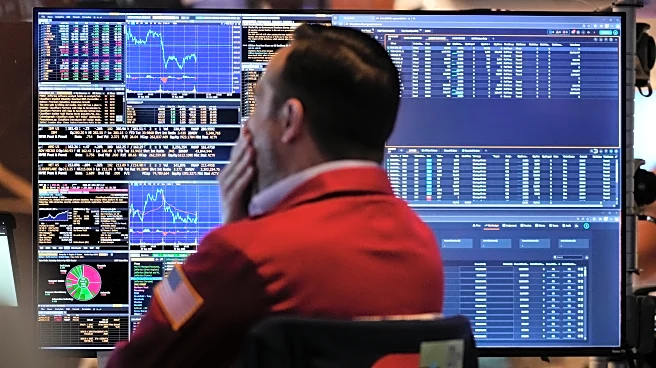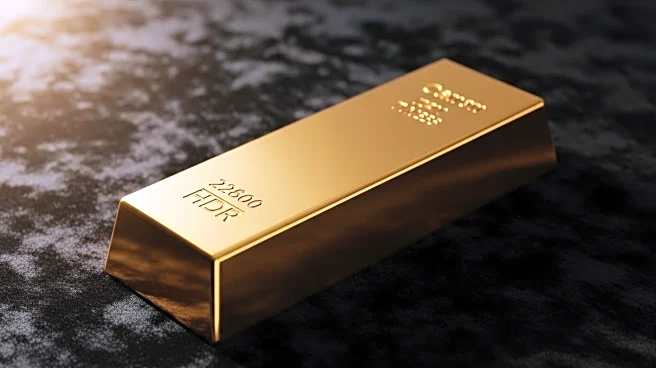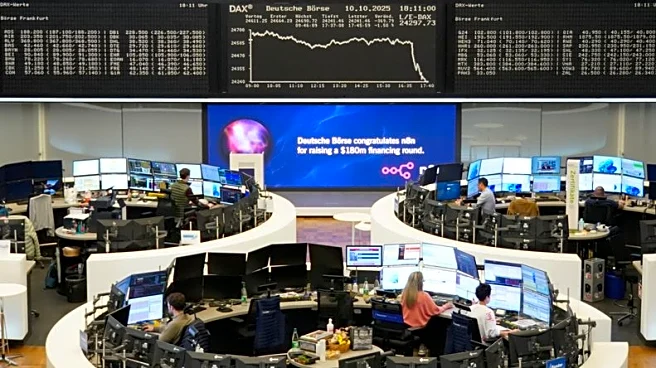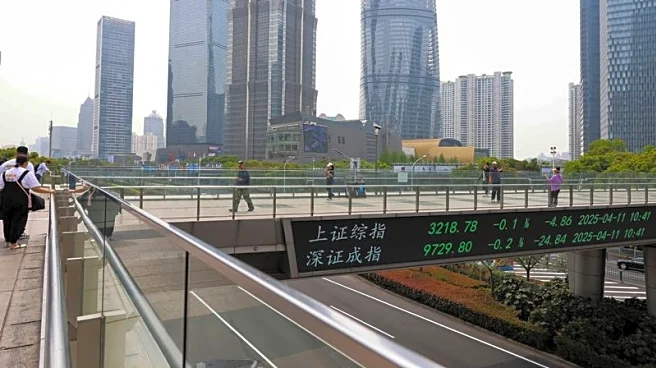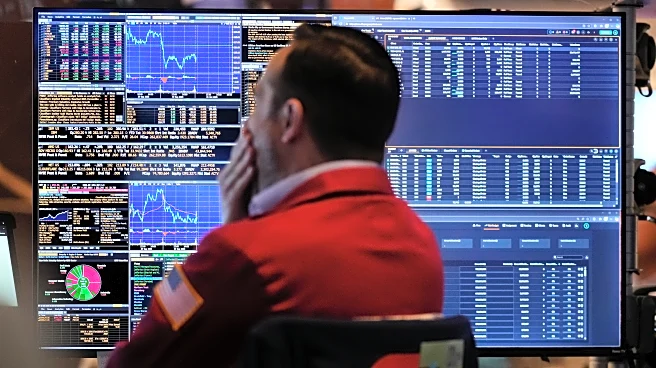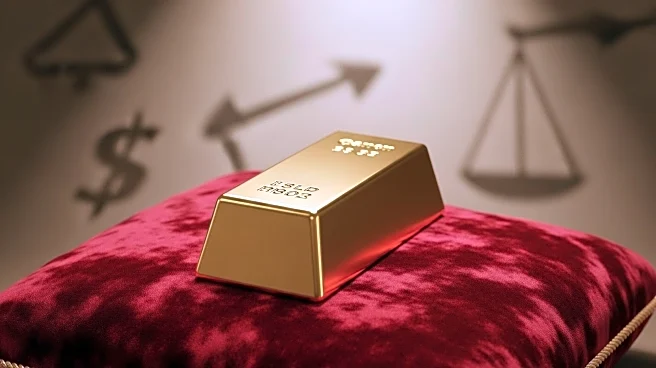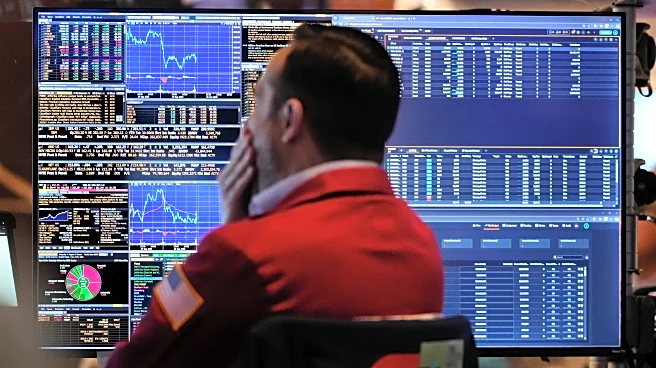What is the story about?
What's Happening?
Gold prices have soared to a record high, driven by safe-haven demand amid escalating U.S.-China trade tensions and expectations of U.S. Federal Reserve interest rate cuts. Spot gold reached $4,059.30 per ounce, while U.S. gold futures for December delivery rose to $4,062.50. Silver also surged to an all-time high of $51.52 per ounce. President Trump imposed 100% tariffs on Chinese goods and announced new export controls on critical software, effective November 1, in response to China's restrictions on rare earth elements. These developments have reignited risks in the gold market, which had previously been influenced by Middle East geopolitical issues.
Why It's Important?
The record highs in gold and silver prices reflect investor concerns over geopolitical risks and economic uncertainties stemming from trade tensions. As non-yielding assets, gold and silver are often sought after during periods of market volatility and uncertainty. The tariffs and export controls imposed by President Trump have heightened these concerns, leading to increased demand for precious metals as a hedge against potential economic downturns. The situation also highlights the impact of trade policies on commodity markets, with implications for investors and central banks that hold significant gold reserves.
What's Next?
The market is anticipating further interest rate cuts by the U.S. Federal Reserve, with a 25-basis-point reduction expected in October and December. Fed Chair Jerome Powell's upcoming address at the NABE annual meeting may provide additional insights into future monetary policy. Meanwhile, geopolitical developments, including meetings between world leaders to discuss ceasefire plans for Gaza, could influence market sentiment. Investors will continue to monitor these events and adjust their strategies accordingly, with potential implications for gold and silver prices.
AI Generated Content
Do you find this article useful?


